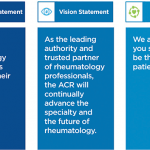SAN DIEGO—The proposed classification criteria for systemic lupus erythematosus (SLE), supported but not yet approved by the ACR and EULAR, were debuted on Nov. 7 at the 2017 ACR/ARHP Annual Meeting. An international steering committee developed and validated the criteria, with patient input and the consensus of more than 150 global SLE experts. Rheumatology researchers…






